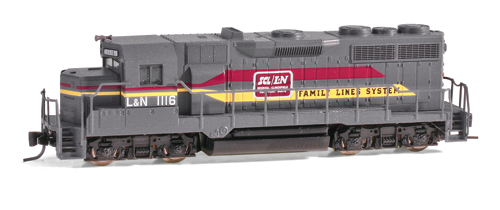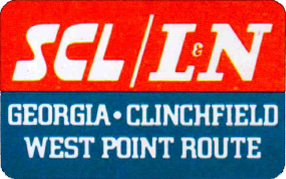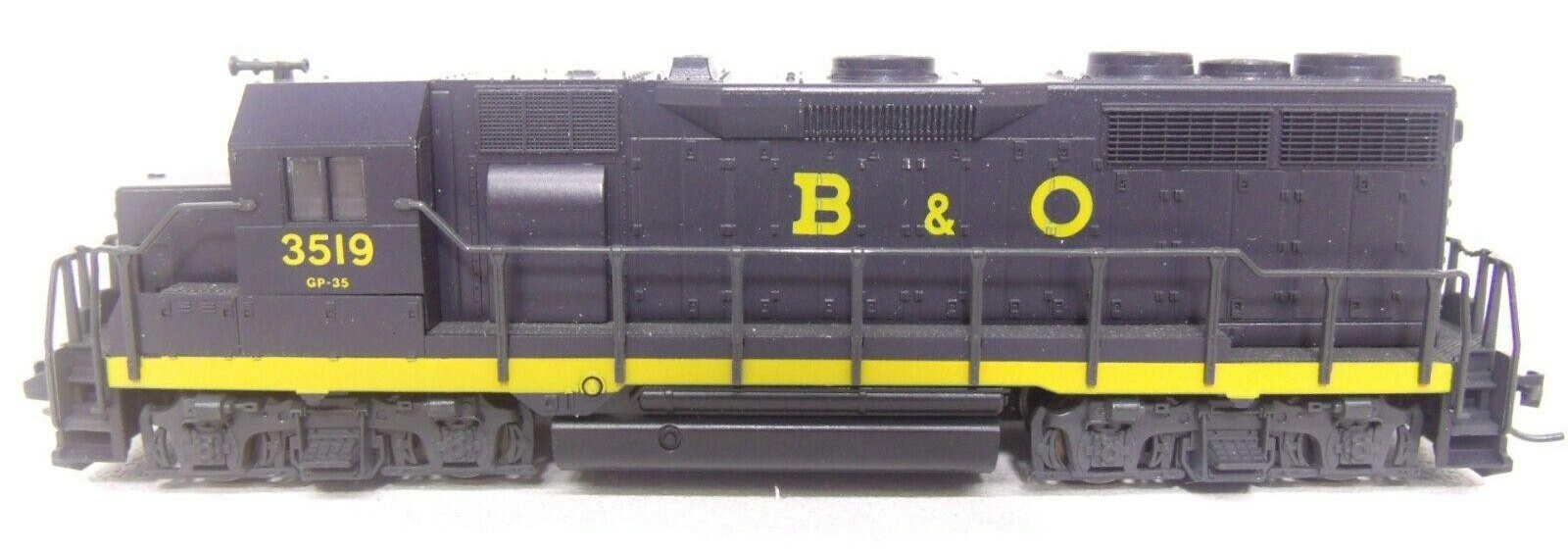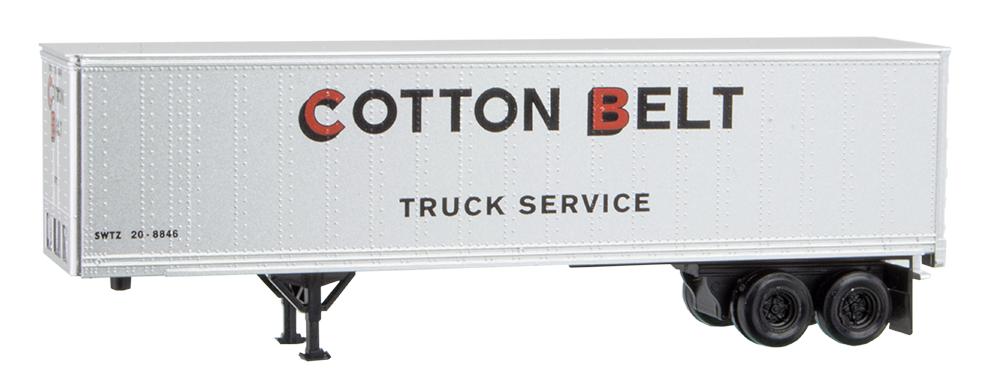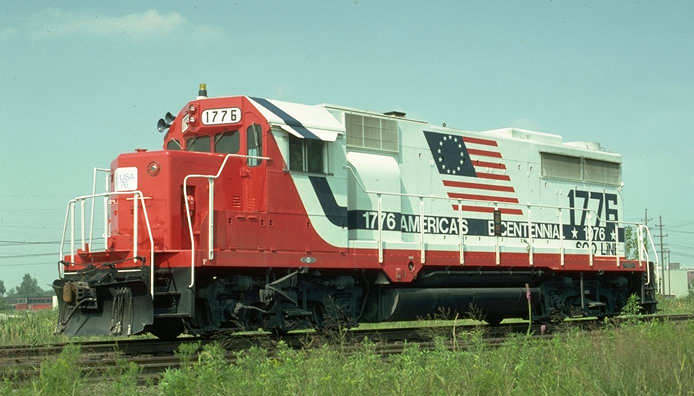Prototype History: The EMD GP35 is a 4-axle diesel-electric locomotive built by General Motors Electro-Motive Division between July 1963 and December 1965 and by General Motors Diesel between May 1964 and January 1966. The locomotive's power was provided by an EMD 567D3A 16-cylinder engine which generated 2,500 horsepower (1,860 kW).
Many railroads traded in Alco and EMD F units for GP35s, reusing the trucks and traction motors. Some railroads had EMD reuse the Alco trucks on the GP35s. Notable examples include the Gulf, Mobile and Ohio Railroad, Southern Railway, and the Ann Arbor Railroad.
1251 examples of this locomotive model were built for American railroads, 26 were built for Canadian railroads and 57 were built for Mexican railroads.
From Wikipedia
Many railroads traded in Alco and EMD F units for GP35s, reusing the trucks and traction motors. Some railroads had EMD reuse the Alco trucks on the GP35s. Notable examples include the Gulf, Mobile and Ohio Railroad, Southern Railway, and the Ann Arbor Railroad.
1251 examples of this locomotive model were built for American railroads, 26 were built for Canadian railroads and 57 were built for Mexican railroads.
From Wikipedia
Road Name History: To be truthful the Family Lines System was never actually an operating railroad, it was merely a marketing tactic which brought together the allying lines of the Louisville & Nashville, Clinchfield, Seaboard Coast Line, and a number of other smaller road (such as the Georgia Railroad, Atlanta & West Point Railroad, and Western Railway of Alabama otherwise referred to as the West Point Route). With this came a new livery (not unlike the later Seaboard scheme) applied to all with sub-lettering stenciled under locomotive cabs identifying the specific company. This marketing scheme was also short-lived, lasting only from 1972 until 1982 when these railroads merged together formally to create the Seaboard System (itself operating for only a few years).
The three main components of the System were the L&N, Clinchfield, and SCL. The L&N (the first component) was a railroad synonymous with the southern states; it served major cities from New Orleans and Memphis to St. Louis, Atlanta, and later Chicago. The L&N is also one of the few classic fallen flags to never have had its original chartered name change at any point throughout its history, serving its home state and the southeast for over 120 years. As the L&N itself disappeared into the Seaboard System in 1982 just a few years later the Seaboard itself would disappear into CSX Transportation.
The three main components of the System were the L&N, Clinchfield, and SCL. The L&N (the first component) was a railroad synonymous with the southern states; it served major cities from New Orleans and Memphis to St. Louis, Atlanta, and later Chicago. The L&N is also one of the few classic fallen flags to never have had its original chartered name change at any point throughout its history, serving its home state and the southeast for over 120 years. As the L&N itself disappeared into the Seaboard System in 1982 just a few years later the Seaboard itself would disappear into CSX Transportation.
Brand/Importer Information:  Micro-Trains Line split off from Kadee Quality Products in 1990. Kadee Quality Products originally got involved in N-Scale by producing a scaled-down version of their successful HO Magne-Matic knuckle coupler system. This coupler was superior to the ubiquitous 'Rapido' style coupler due to two primary factors: superior realistic appearance and the ability to automatically uncouple when stopped over a magnet embedded in a section of track. The success of these couplers in N-Scale quickly translated to the production of trucks, wheels and in 1972 a release of ready-to-run box cars.
Micro-Trains Line split off from Kadee Quality Products in 1990. Kadee Quality Products originally got involved in N-Scale by producing a scaled-down version of their successful HO Magne-Matic knuckle coupler system. This coupler was superior to the ubiquitous 'Rapido' style coupler due to two primary factors: superior realistic appearance and the ability to automatically uncouple when stopped over a magnet embedded in a section of track. The success of these couplers in N-Scale quickly translated to the production of trucks, wheels and in 1972 a release of ready-to-run box cars.
Micro-Trains Line Co. split off from Kadee in 1990 to form a completely independent company. For this reason, products from this company can appear with labels from both enterprises. Due to the nature of production idiosyncrasies and various random factors, the rolling stock from Micro-Trains can have all sorts of interesting variations in both their packaging as well as the products themselves. When acquiring an MTL product it is very important to understand these important production variations that can greatly enhance (or decrease) the value of your purchase.

Micro-Trains Line Co. split off from Kadee in 1990 to form a completely independent company. For this reason, products from this company can appear with labels from both enterprises. Due to the nature of production idiosyncrasies and various random factors, the rolling stock from Micro-Trains can have all sorts of interesting variations in both their packaging as well as the products themselves. When acquiring an MTL product it is very important to understand these important production variations that can greatly enhance (or decrease) the value of your purchase.
Item created by: petecduffy on 2019-06-06 15:28:24
If you see errors or missing data in this entry, please feel free to log in and edit it. Anyone with a Gmail account can log in instantly.
If you see errors or missing data in this entry, please feel free to log in and edit it. Anyone with a Gmail account can log in instantly.


